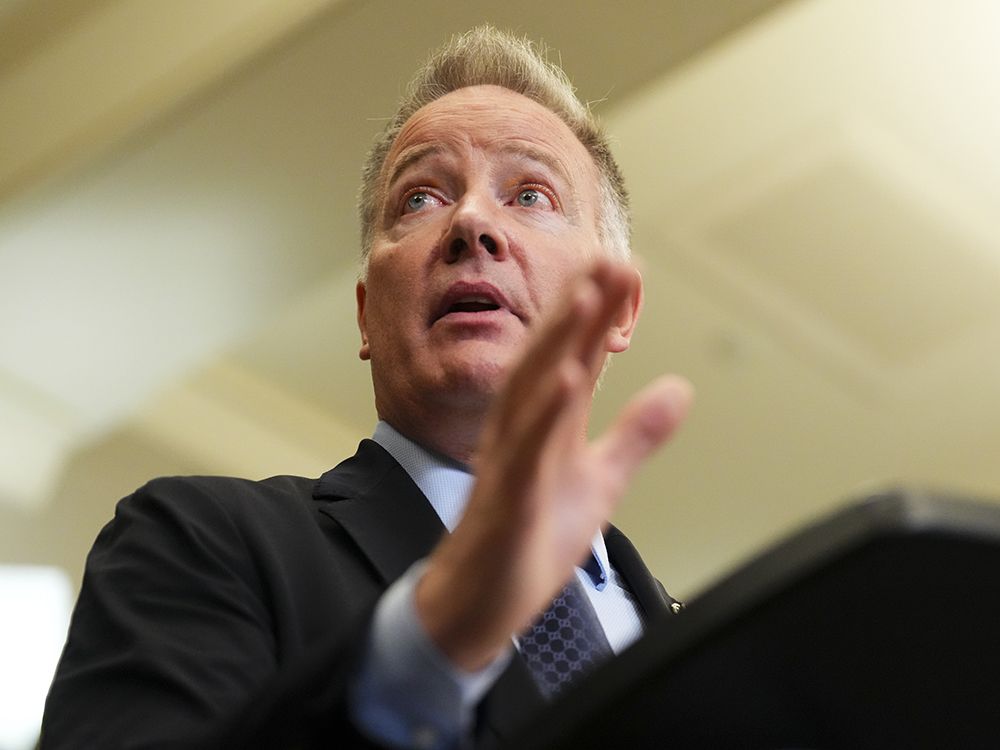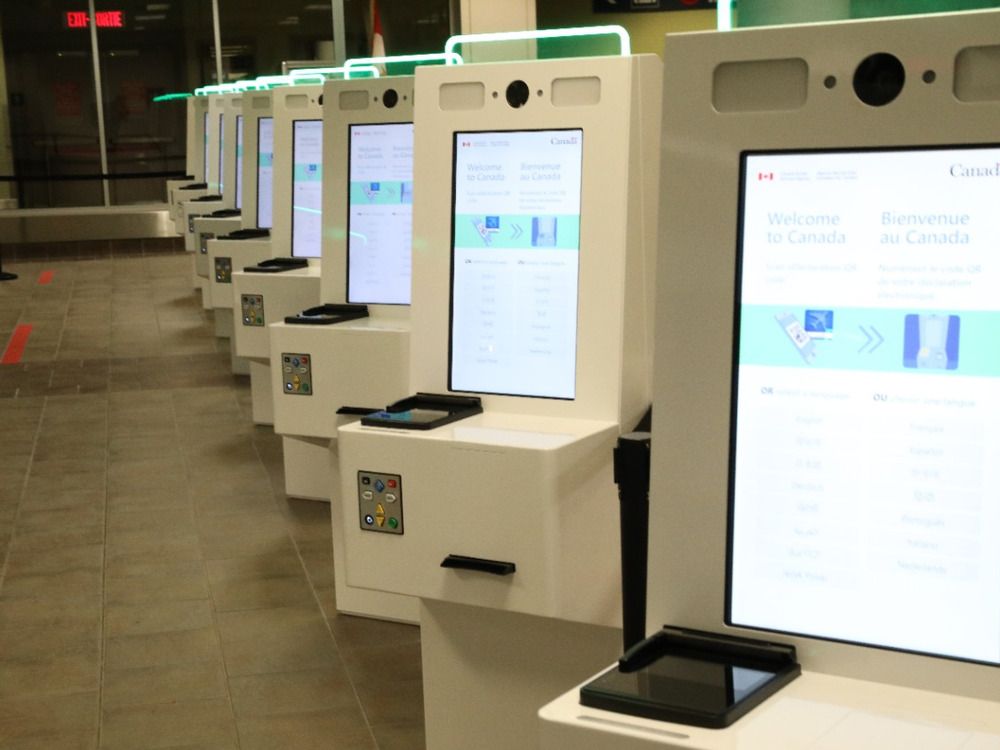
WASHINGTON, D.C. — The U.S. administration is set to publish its National Defense Strategy this month at a time when the Pentagon is planning for a leaner, meaner military, and President Donald Trump is inviting Canada to enjoy the protection of Golden Dome defence by becoming the 51st U.S. state.
So, National Post spoke with Jennifer Kavanagh, a senior fellow and director of military analysis at Defense Priorities and an adjunct professor at Georgetown University’s Center for Security Studies, to get her insights on American defence strategy and the road ahead.
(This interview has been edited and condensed due to length.)
Q: The new National Defense Strategy is expected to prioritize homeland and North American defence with less emphasis on China and global commitments. How do you assess this shift in policy?
A:
It’s being portrayed a bit misleadingly. Homeland defence has always been an important part of the NDS. It obviously should be the No. 1 focus of any military: defending the homeland. Traditionally, it hasn’t been the first thing mentioned, and I think it will be this time.
I think this will indicate a shift back towards a hemispheric defence strategy, which is what the U.S. pursued prior to World War II. I think there will be a broader definition of homeland defence in the sense that it won’t just include air and missile defence. It’ll also include border security, a focus on drug cartels and drug smuggling, human trafficking, and other threats that the administration sees coming from Latin America as well as broader strategic interest in the Western Hemisphere, whether that’s the Panama Canal or preventing Chinese influence elsewhere, or thinking about the Arctic, and natural resources in Greenland and Canada. I think those are things that the administration’s thinking about and that will factor into the NDS.
But you don’t need a trillion dollars to do those things. You don’t need a trillion dollars to fight cartels in Latin America. The United States has a one-war military, and the war that it’s preparing for is still a war with China. China will still be the pacing threat. It will still be what drives training and acquisition decisions.
Things like the F-47, the B-21 bomber, new submarines — these are not things you need if you’re going to focus only on Latin America. So even if China isn’t the first thing mentioned, even if there is a focus on shifting from a global military to a military more narrowly focused on existential core interests, China will still play a major role in what the Pentagon does, how it plans, and how it thinks.
The big strategic shift will be that Europe will be a distant third. There is an interest in the administration in retrenching, if not in terms of personnel, then strategically from its commitments in Europe.
Q: What are the most critical implications for NORAD and U.S.-Canada security cooperation in the Arctic and maritime domains, given Russian and Chinese activities?
A:
I think those things will become a bigger focus. Certainly, NORAD and missile defence of North America will become a bigger focus for the Pentagon. You already see that with the talk about Golden Dome (missile defence). And Golden Dome isn’t something that’s going to be a proximate outcome just because the technologies will take time to develop.
But thinking about gaps in missile defence and how the United States and Canada can work better together to mitigate the increasing number of missile threats from not just Russia and China, but other countries as well, is obviously a priority. In terms of U.S. interests in the Arctic, I think the main interest is an economic one — preserving U.S. access to key natural resources and to opening sea routes. I think there is concern in the administration about Russian but also Chinese activities in the Arctic, and making sure that those don’t preclude the United States from also operating in the region. So that will also be a focus. Because this hasn’t been a major focus in the past, the United States will have to turn to allies like Canada as well as Northern Europe to operate effectively in that area. So I do think that’s an area of expanding cooperation.
Q: With the U.S. narrowing its strategic focus away from Europe, could this force Canada into being the primary defender of the Arctic? Is it prepared for that?
A:
I’m not an expert on Canadian defence, but I do think that the U.S. continues to see itself as a major leading Arctic power. I don’t think it will necessarily be looking to offload that burden. If anything, I see it taking an expanding military role in the Arctic. That’s not something I would necessarily advocate, but I do think it’s something that the administration could potentially be interested in.
Since strategic retrenchment from Europe will initially be in terms of the ground commitment and reducing the U.S. focus on conventional threats coming from Russia, continued U.S.-European cooperation in the Arctic is likely. So I think there will be an increasing interest in having Canadian cooperation. Certainly, there’s an interest in Europe in increasing European-Canadian cooperation in this area, but I don’t know that it will result in burdens that Canada does not want or is unready for.
Q: How does Washington’s narrowing view of NATO’s Article 5 and reduced European role affect Canada’s military obligations and wider allied cohesion? Do you believe the U.S. would uphold Article 5, given today’s defence spending levels among the allies?
A:
Article 5 has often been interpreted in a very broad way to sort of mandate the commitment of U.S. forces in response to any threat to European allies. That’s not actually what it says. Article 5 is actually quite narrow in its commitment. It requires that allies consult and respond and take some sort of action consistent with their constitution and with their assessment of the threat. So the U.S. could meet the Article 5 commitment with much less than a deployment of military forces.
I think that the administration has no intention of withdrawing from NATO or ignoring Article 5. But I do think that there would be a more careful assessment if threats were to emerge of what type of U.S. commitment is appropriate, given the threat, rather than just a knee-jerk response to send the maximum commitment.
That means that allies will be expected to do more. There is increasing focus on ally defence levels, and I do think there will be increasing pressure on Canada to spend more, just like there is increasing pressure on all allies to spend more.
But I don’t know that, ultimately, the decision would be made based on how much allies had spent. The ultimate decision will be made on what is in U.S. strategic interests.
Q: Canada is pledging to meet NATO’s 2% defence-spending target — do you find this credible, and will it improve Canada’s reliability as a U.S. and NATO partner?
A:
I think more spending would make Canada a more reliable partner and a partner that can contribute more to NATO’s defence. But I have to be honest: Canada’s calculations here in terms of not spending 2% are completely rational. Any threat that affects Canada is gonna affect the United States, and the United States will clearly act to defend its best interests. That means Canada has a little bit of a security blanket, no matter what. It’s hard for me to say whether it’s credible or not because that is a rational calculation.
The Trump administration has used other tools to try to force allies to spend more, not just security guarantees, but also tariffs and other types of sticks that it has used to apply pressure. So I do think that Canada will meet that 2% target. Whether it will meet the 5% target, I don’t know.
I like to say the United States is blessed with favorable geography. It has oceans on two sides and friendly neighbours to the north and south. That allows the United States to do much less militarily and have a much smaller military footprint than it does now. Canada is also blessed with favourable geography in the sense that it is also protected by oceans and it has the United States to the south. I think that will always factor into how Canada views its defence and its spending.
Q: Do you view U.S. retrenchment from Europe and the limited military aid to Ukraine as a betrayal of NATO commitments? Does it risk the alliance’s credibility?
A:
The United States has shouldered the burden of NATO security and European security for eight decades. Previous administrations have calculated that it was in the U.S.’s interest to underwrite the security of Europe. I disagree. If you look back at the founding debates of NATO, many were skeptical of whether the United States should be taking on such a large military role in Europe — whether it would’ve made more sense even in 1949 to remain more focused on the Western Hemisphere.
My view is that the mistakes that were made were in 1949 in extending this broad security guarantee to the European continent as well as in 1991, when, instead of taking the end of the Cold War as an opportunity to retrench more and to think about a new European security architecture that could have included Russia, the decision was made instead to continue to pursue militarization as the main pillar of the U.S.-Europe security relationship.
I’m in favour of a move that would retrench U.S. military commitments from Europe. I think Europe is very capable of defending itself against any threat that might come from Russia.
The Russian military has not proven itself to be all that strong in Ukraine. So, no, I don’t see it as a betrayal. I think the United States has long taken on a much broader definition of its interests than it should have — and that it makes sense for the United States now to ask Europe to take on responsibility for its own defence, to take on responsibility for Ukraine, and for the United States to focus on its core interests, which don’t lie entirely in Europe.
Q: President Trump has pivoted a little bit rhetorically around Ukraine in recent weeks, and there has been talk of possibly increasing some weapon assistance to Ukraine. How do you assess that, given this new approach? What do you expect in the year ahead in terms of U.S. support?
A:
Trump has made it pretty clear that he expects Europe to shoulder the burden of defending Ukraine and that the U.S. will provide weapons that Europe purchases. But I don’t see a large appetite for any more U.S. military assistance that isn’t purchased.
There’s a small amount in the National Defense Authorization Act, but it’s not a lot, and I don’t expect the United States to do more than that. Trump has talked about providing more weapons, but it’s always been in the context that Europe will pay for them.
Trump has no interest in expanding U.S. involvement in supporting Ukraine, although he’s supportive of Europe spending money to support Ukraine. And I don’t think that Trump wants Ukraine to collapse. He’s not going to walk away because he’s concerned about being accused or being seen to have lost Ukraine in the way that Biden was seen to have lost Afghanistan, when the United States pulled out.
Q: So there are limits to his retrenchment?
A:
Yeah, I don’t think Trump will walk away from Ukraine. He expects Europe to shoulder the burden, but he doesn’t want to see Ukraine collapse. If he wanted to just walk away to cut ties with Ukraine, he would’ve done it already. But he hasn’t, and the reason he hasn’t, in my view, is because he doesn’t want to be seen as the one who lost Ukraine. He is concerned about the domestic political ramifications of a Ukraine collapse on his watch.
Q: President Trump recently told U.S. military leaders that Canada had expressed interest in joining the Golden Dome missile defence system, and he suggested that if Canada wanted to participate, it should consider becoming the 51st state of the United States. Do you think such rhetoric risks undermining the defence relationship between the two countries? Could it fuel diplomatic tensions?
A:
Absolutely, it could fuel more diplomatic tensions. I think it’s unhelpful. The United States does benefit from having Canada’s assistance and participation in any sort of homeland defence. It benefits from being able to position radars on Canadian territory. It benefits from having Canada as an active member of NORAD and in any future sort of Golden Dome project. So, in my view, having Canada as a friendly and helpful partner is in the U.S. interests, and talking about Canada becoming the 51st state works against that.
I also don’t see why having Canada as a 51st state would be in U.S.’s interest, to be honest. The countries have great relationships, and taking on more territory is not something that I would advocate for. The United States can benefit from having a friendly relationship with Canada without controlling Canada.
Q: Could Canada use access to being able to position radars for missile defence in their country as leverage in ongoing trade talks and in the CUSMA renegotiation?
A:
Anything that Canada can use to show that it could benefit U.S. interests is something that I think would be appealing to the administration. This is a transactional administration, so anytime it can make a deal that seems like it’s getting something for anything that it’s giving, that is something that works, that the administration has pursued and seems to like. And you’ve seen how they do it with other countries — with Japan and Korea, it’s in the messaging about the deal. It’s all about what the U.S. got.
Q: But the U.S. already has access to Canada and its defence support. So would Ottawa have to actually threaten to take that away?
A:
I think reminding the administration of these benefits and potentially offering additional benefits or offering to shoulder the costs of any U.S. assets in Canada are things that other countries have found to be beneficial in these types of negotiations.
Q: How should the U.S. and Canada coordinate on ambitious homeland defence projects like Golden Dome, and do these initiatives risk overstretching allied budgets at the expense of conventional NATO commitments?
A:
I’m a little bit skeptical of Golden Dome. I think the United States needs more air and missile defence, but I’m not sure that Golden Dome is the way to go. I think it’s quite risky. I’m not sure all the technologies will pan out. You risk spending a lot of money on capabilities that you don’t need and that don’t actually give you the security benefits that you would get from just investing more in cheaper technologies.
Any sort of homeland defence for the United States has to include Canada, because Canada is right there and part of the same territory. So, having Canada participate in Golden Dome or anything like Golden Dome is advantageous and beneficial, and there’s certainly plenty of room for cooperation on the relevant technologies to missile defence, even if it’s not Golden Dome.
I am concerned about the excessive cost of Golden Dome and potentially low returns, especially for Canada, given that it is looking to ramp up its defence spending. It’s not clear that spending on a pricey, risky project is the right move, but that’s true for the United States, too.
Q: What under-appreciated risks and opportunities do you see for Canada as the U.S. pivots home, and what advice would you give both governments to safeguard North America and allied defence?
A:
To me, the biggest threats to North America involve air and missile defence, which I’ve already talked about, cyber, and other types of hybrid threats. I think that the two countries should focus on cooperating in those areas.
To me, pivoting home is the right decision, but the United States doesn’t need a big military or a lot of new military activity in North America or in the Western Hemisphere. So the pivot home only makes sense if you’re going to cut the military’s size, downsize, get a leaner military, and focus on economic and law enforcement, and other types of activities in the region itself.
Border security does not have to be a military task — it’s a law enforcement task. Exploiting economic resources is not a military task — it’s an economic task. So my concern is that the pivot home is over-militarized. We don’t need to pivot home and then use all the military forces that we have in Europe or in Asia to do things in the Western Hemisphere. That’s not necessary and leads to risks that we end up militarizing the northern border just like we have the southern border. It leads to the use of U.S. military forces in cities and domestically for domestic purposes, which isn’t helpful. It leads to an over-militarized approach to the Arctic, which is also not ideal.
So, in my view, the pivot home only makes sense if it’s going to be accompanied by downsizing of the military and a shift to other tools of national power.
Q: Are you getting the sense that that’s the plan?
A:
It’s not clear. There’s only so much that the United States can do militarily in the Western Hemisphere, which is why I don’t think that the pivot home is going to be the pivot home that I imagine.
I think it’s going to be, “Yes, we’re prioritizing the Western hemisphere, but we’re still also pivoting to Asia.” So it’s kind of like a double pivot away from Europe and the Middle East, but we’re going to stay focused on China, and we’re going to focus more on the homeland.
I would advocate something quite different, that also downsizes U.S. presence in Asia, and I don’t think that’s going to happen.
In terms of the focus on the Western Hemisphere, it’s already been more militarized than I would recommend. So, I commend the administration for trying to rethink U.S. strategic interests, and I do think something that prioritizes the Western Hemisphere makes sense. However, I’m not sure that the pivot home is quite as extensive as it’s being portrayed in the press.
Asia will continue to play a big role, and it will continue to be a heavily militarized role, which raises the risk of war with China. And so far, the approach to the homeland and the Western Hemisphere has also been quite militarized in ways that I’m not sure are the best way to approach the challenges that the United States faces in that region.
Q: Any advice for Prime Minister Mark Carney in his dealings with the Trump team on all matters defence?
A:
I think spending more on defence matters a lot to this administration, but any leader who’s playing the defence-spending bargaining game with Trump should recognize that it could be a temporary bargain.
So, really, any government leader — of Canada or anywhere else — thinking about how U.S. retrenchment might affect their security should make security decisions like what is necessary to defend Canada if I can’t count on the United States, whether that’s more or different types of spending.
That should be the goal: trying to figure out what that looks like, and then you can work with Trump on areas of cooperation and meeting whatever targets are necessary to preserve the relationship and achieve other types of economic or diplomatic goals.
But there should never be the assumption that because I spent X on security, I’ve dealt with that problem, because I don’t think that’s a secure bargain with this administration or a future one.
National Post
Our website is the place for the latest breaking news, exclusive scoops, longreads and provocative commentary. Please bookmark nationalpost.com and sign up for our newsletters here.



















